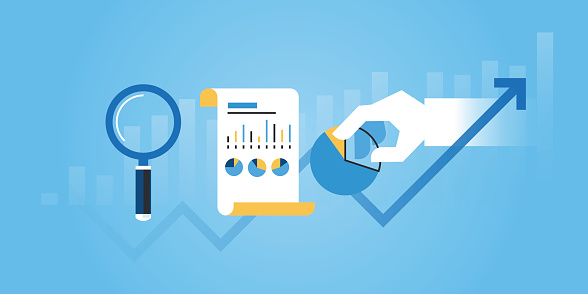
©Varijanta/ISTOCK/THINKSTOCK
Finance professionals today recognize the need to extract value from the inundation of data. As their job gets more complex, the need for tools that allow for increased efficiency is crucial. In fact, a recent global survey from SAP and CFO Research found that three-quarters of CFOs and financial executives anticipate making effective use of Big Data over the next five years. But how can data best be harnessed in order to gain valuable insights?
Predictive analytics is one of the key use cases for Big Data that forward-looking finance organizations are implementing to forecast future performance and drive strategic decision-making. For background, predictive analytics refers to the capability of an organization to discover and communicate meaningful patterns in data to predict and improve business performance, recommend action, and guide decision-making. Financial organizations can use predictive analytics to identify trends and play out “what-if” scenarios in real-time.
Common Use Cases for Predictive Analytics
Traditionally, software has been useful in reading and analyzing structured data, but the volume of unstructured data – from external financial reporting systems, RFID sensors, and social media, for example – is exploding. Predictive analytics can help CFOs and other finance professionals harness data for more accurate planning, forecasting, and decision making based on what’s happening now and what’s likely to happen, rather than what happened in the past.
There are a number of routine processes that can be improved or enhanced using predictive analytics, including:
- Cash forecasting: Leveraging data insights, financial professionals can look at trends to identify slow and fast payers, detect system issues and address and improve receivable management.
- Detection of financial risks: Financial departments can leverage predictive analytics to establish baseline criteria that makes it easier to identify outliers before they can hurt overall company performance.
- Company performance risk management: Predictive analytics can also help finance professionals get a forecasted “sneak preview” into the financial mid-period to avoid surprising news.
- Receivables aging: Finance professional can optimize receivables aging processes and collect overdue amounts faster by setting alerts when customers deviate from past payment patterns.
Predictive Analytics in Action
The uses for predictive analytics aren’t limited to the finance sector – companies across industries are exploring uses for predictive analytics.
For example, the American Automobile Association (AAA) built a centralized “action center” to provide better insight into member needs. With next-generation predictive analytics, AAA could better understand customers’ needs by having real-time access to data. This led to enhanced marketing campaigns and reduced customer attrition rate.
A second finance use case is optimizing your balance sheet like Danish skylights manufacturer and distributor VELUX Group leverages. VELUX’s finance department predicts warranty cases for their high end product line in order to be able to take excess provisions off and gain a deeper understanding of which defects drive up claims and work on their reduction or work on them before the defects occur.
Another example is Live Oak Bank, which lends exclusively to small businesses and specific professions like veterinarians and pharmacists. Due to the nature of these customers, the bank values speed and flexibility. The bank is guided by executives who are industry leaders in both finance and technology, bringing innovation and efficiency to the lending process. The bank leverages real-time analytics to make better decisions more quickly. With the predictive analytics platform, decision-makers now enjoy greater collaboration and transparency, and the team can respond quickly to managers.
Across industries, predictive analytics has a great deal of potential to help increase efficiency. For finance professionals who are taking on more responsibility than ever before, it can serve as a valuable tool to aid in planning, forecasting and decision-making.
If you had the ability to see into the future, would you? Data analytics technology can help finance departments separate the future from the present, and ultimately get a step ahead of the competition.
Henner Schliebs is vice president and head of Finance Audience Marketing at SAP.